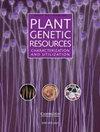Predicting the frequency of transgressive RILs and minimum population size required for their recovery in horse gram (Macrotyloma uniflorum (Lam.) Verdc)
IF 0.7
4区 生物学
Q3 PLANT SCIENCES
Plant Genetic Resources: Characterization and Utilization
Pub Date : 2022-05-12
DOI:10.1017/s1479262122000077
引用次数: 0
Abstract
Early elimination of poor crosses based on an objective criterion allows increased allocation of resources only to a few promising crosses for identifying superior recombinant inbred lines (RILs) for use as pure-line cultivars in self-pollinated crops. Early generation (F2:3) prediction of frequency of superior RILs that could be derived from advanced generations of crosses is one such criterion. We predicted the frequency of transgressive RILs from two horse gram crosses (namely HPKM 320 × CRIDA18-R and IC 361290 × Palem 1) for primary branches per plant, pods per plant, pod weight per plant and grain weight per plant based on mid parental value, additive genetic effects and additive genetic variance estimated from trait means of parents, and their F2 and F2:3 generations. The predicted frequency of RILs that transgressed better parent/two checks varied with the cross and the trait within a cross. The frequencies of transgressive RILs predicted from IC 361290 × Palem 1 were higher than those predicted from HPKM 320 × CRIDA 18-R for three of the four traits. As expected, the minimum population size required to recover the transgressive RILs predicted from IC 361290 × Palem 1 was relatively smaller than that from IC 361290 × Palem 1. Increased allocation of resources for handling segregating populations derived from IC 361290 × Palem 1 is expected to result in superior RILs for use as cultivars. We believe that the objective criterion used in our study is handy in identifying superior RILs in early segregating populations derived from a few promising crosses.预测马兰(Macrotyloma uniflorum, Lam.)侵染率及其恢复所需的最小种群规模。Verdc)
根据客观标准及早淘汰不良杂交品种,可以将更多的资源分配给少数有前途的杂交品种,以鉴定优良的重组自交系(ril),作为自花授粉作物的纯系品种。早代(F2:3)预测从高代杂交中得到的优良ril的频率就是这样一个标准。利用亲本的中亲本值、加性遗传效应和亲本性状均值估计的加性遗传方差及其F2和F2:3代,对2个马克杂交(HPKM 320 × CRIDA18-R和IC 361290 × Palem 1)单株初级分枝、单株荚果、单株荚果重和单株粒重的越界遗传变异频率进行了预测。超亲本/双亲本检查的预测频率随杂交和杂交内性状的变化而变化。在4个性状中,IC 361290 × Palem 1预测的海侵ril频率有3个高于HPKM 320 × CRIDA 18-R。正如预期的那样,IC 361290 × Palem 1预测的海侵风险恢复所需的最小种群规模相对小于IC 361290 × Palem 1。增加资源分配以处理IC 361290 × Palem 1衍生的分离群体,预计将产生优越的ril作为栽培品种。我们相信,在我们的研究中使用的客观标准,有助于在由少数有前途的杂交衍生的早期分离群体中识别出优越的ril。
本文章由计算机程序翻译,如有差异,请以英文原文为准。
求助全文
约1分钟内获得全文
求助全文
来源期刊

Plant Genetic Resources: Characterization and Utilization
Agricultural and Biological Sciences-Agronomy and Crop Science
CiteScore
2.80
自引率
0.00%
发文量
29
审稿时长
>12 weeks
期刊介绍:
Plant Genetic Resources is an international journal which provides a forum for describing the application of novel genomic technologies, as well as their integration with established techniques, towards the understanding of the genetic variation captured in both in situ and ex situ collections of crop and non-crop plants; and for the airing of wider issues relevant to plant germplasm conservation and utilisation. We particularly welcome multi-disciplinary approaches that incorporate both a technical and a socio-economic focus. Technical aspects can cover developments in technologies of potential or demonstrated relevance to the analysis of variation and diversity at the phenotypic and genotypic levels.
 求助内容:
求助内容: 应助结果提醒方式:
应助结果提醒方式:


